The history of the development of processors: from the 70s to the 90s
The central processor is a complex integrated circuit, which is one of the key components of the elements of a modern PC. The first computers appeared around the 40s of the last century, working on electromechanical relays and vacuum tubes. They provided the functioning of the first computers. In the 60s, the first integrated circuits appeared which for a long time became an integral part of any computing device. The beginning of the era of modern CPUs can be safely called the year 1971.
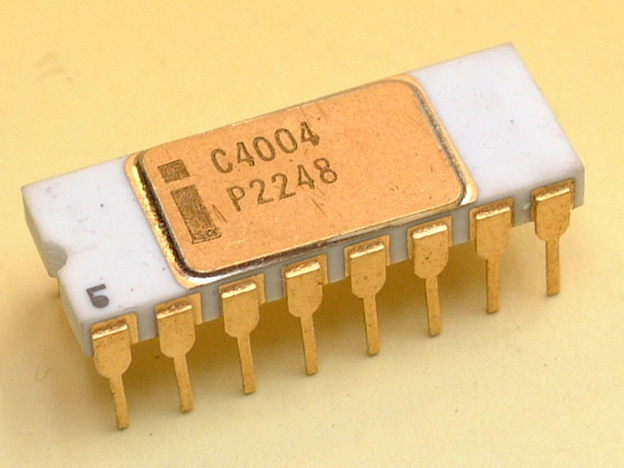
The first single-chip microprocessor is considered a 4-bit Intel 4004, released November 15, 1971. Intel was just starting its formation and its creators, Robert Noyce, Gordon Moore and Andrew Grove, spent a lot of energy on the development process. Thanks to the contribution of the Italian physicist Federico Fagina, the company's engineers managed to place the key components on one chip and create a microprocessor 4004.
Intel 4004 was produced using a 10-micron process technology, counted 2,250 transistors and worked at a frequency of 108 kHz (performed 92,600 operations per second). The clock frequency was 740 kHz. The memory capacity reached 4 Kb, the bus capacity was 4 bits. The crystal area was 12 mm 2 .

In the early 70's, the company released the first 8-bit central processor Intel 8008. It was developed simultaneously with 4004 on order for Computer Terminal Corporation (later Datapoint). But the company refused the CPU (as well as cooperation with Intel) due to the fact that the process of creating the microcircuit went beyond the established deadlines, and its characteristics did not meet expectations.
According to the technical characteristics, the microprocessor 8008 largely corresponded to the previous version. It was produced using the same 10-micron process technology and contained 3,500 transistors. The internal stack supported 8 levels, and the memory capacity was 16 Kb. The clock frequency was lower than that of 4004, it was 500 kHz. In terms of speed, the 8-bit Intel processor lagged behind the 4-bit one. The bus width was 8-bit. The processor could access 8 input ports and 24 output ports.
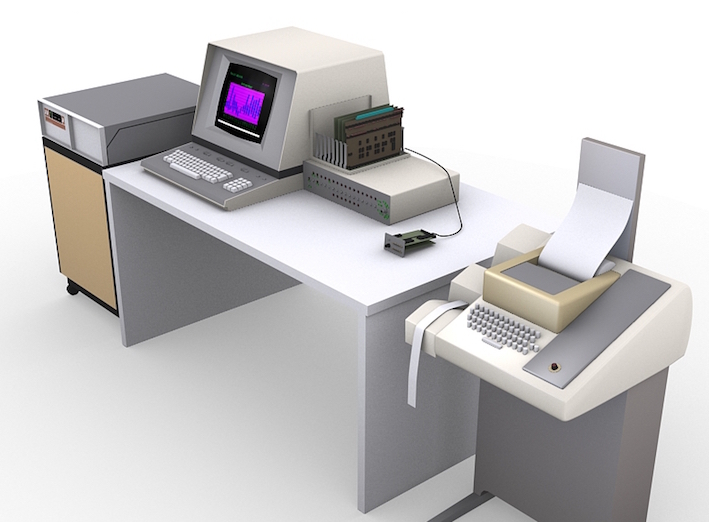
One of the first microprocessor-based computer systems was the Sac State 8008 project (1972). It was a full-fledged microcomputer with a disk OS, a color display, 8 KB of RAM and a 3 + 2 MB disk, keyboard, modem, and printer. It was intended for the processing and storage of medical records.
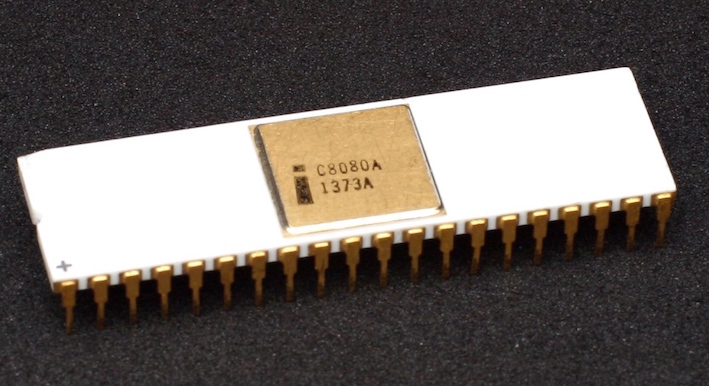
In the spring of 1974, Intel released an improved version - the 8-bit Intel 8080 microprocessor. It was produced using the new 6-micron process technology using NMOS technology, which allows 4758 transistors to be placed on the chip. The clock frequency was 2 MHz (with a time of 2.5 MHz, 3.1 MHz and 4 MHz), the memory capacity was 64 Kb. The width of the data bus was 8-bit, and the address bus was 16-bit. The 8080 had a highly developed command system: 16 data transfer commands, 31 commands for their processing, 28 commands for transition (with direct addressing), 5 control commands.
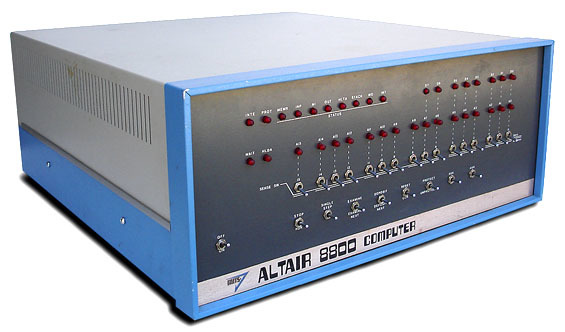
Due to the high performance of the processor, it was a success. Based on the Intel 8080, MITS has released the Altair-8800 microcomputer. Despite the modest characteristics (256 bytes of RAM, the lack of a monitor and keyboard), he gained unprecedented popularity and sold out very quickly.
There were quite a few Intel 8080 clones from other companies, such as National Semiconductor, NEC, Siemens, and AMD. There was also a Soviet counterpart from the Kiev Scientific Research Institute of Microdevices - the KR580VM80A microprocessor (1977).
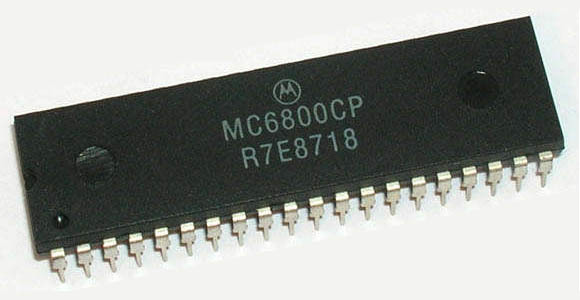
In 1974, Motorola released its processor - 6800. The crystal was produced using a 6-micron process technology, with a clock frequency of 2 MHz and a memory of 64 Kb. N-MOS technology was used. The processor had a 16-bit address bus and a command system of 78 operations. An index register was present.
Motorola 6800 was very popular, it was used in many PCs. Motorola 6801 and 6803 microcontrollers were created on the basis of its architecture.
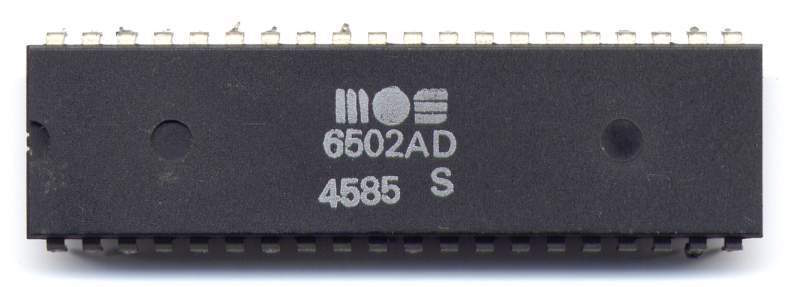
In 1975, MOS Technology introduced the 8-bit microprocessor 6502. In fact, this processor was an updated version of 6501, which failed due to pin compatibility with the Motorola 6800. The CPU was inferior to the competitors 8080 and 6800 in terms of performance. It had a 16-bit address bus, 64 Kb of RAM. The clock frequency was only 1 MHz. The processor had a CISC architecture.
The advantage of this model was the price - only $ 25 (many times cheaper than Intel and Motorola). This has contributed to the rapid growth in processor sales.
6502 was used in PCs such as Apple I, Apple II, Commodore PET, etc. Also, processors of this series have found application in video games, starting with the Atari 2600, using the 6507 model with fewer pins and the ability to address only 8 KB of memory.
MOS Technology granted licenses by Rockwell, Synertek for the production of processors and the use of 6502. There was a Soviet analogue of 4K602BM1.
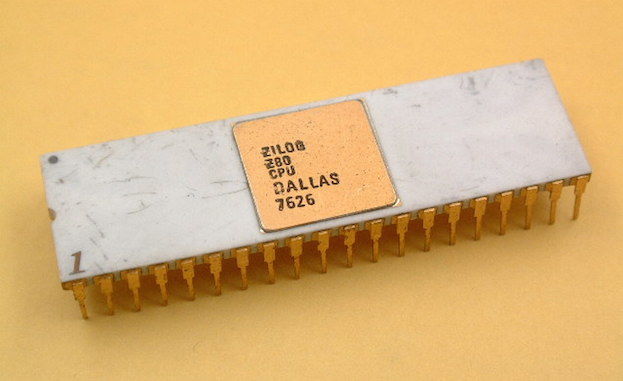
In the second half of the 70s, one of the creators of the microprocessor, Italian Federico Fagin, left Intel. Together with engineer Ralph Wingermann and Japanese engineer Masatoshi Shima, they founded the company Zilog. And already in the early summer of 1976, the Zilog Z80 processor entered the market, which in its architecture resembled the improved 8080. The microprocessor had an expanded set of instructions, new registers, interrupt modes, two separate register blocks.
The Z80 was manufactured using the 3-micron process technology using CMOS technology and contained 8500 transistors. The clock frequency ranged from 2.5 MHz to 8 MHz for the main version and 1 MHz to 20 MHz for the CMOS version. The memory reached 64 KB, with a 16-bit address bus. The size of the crystal was 4.6 mm x 4.9 mm, with an area of 22.54 mm 2. In addition to technical advantages, the Z80 was also cheaper than the Intel processor.
The CPU came in different versions: Z80 (2.5 MHz), Z80A (4 MHz), Z80B (6 MHz) and Z80H (8 MHz). It was used in computers Sharp, NEC and others.
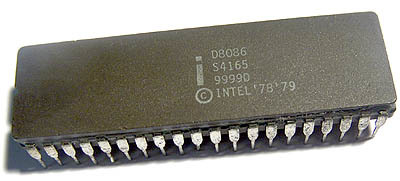
In 1978, Intel released the first 8086 16-bit microprocessor. It has been under development for more than two years. The processor was manufactured using a 3-micron process technology and contained 29,000 transistors. The memory capacity reached 1 MB. The clock frequency was 4 MHz - 10 MHz, the width of the registers and the data bus was 16 bits, and the width of the address bus was 20 bits. Intel 8086 differed in speed.
The 8086 processor had fourteen 16-bit registers: 4 general-purpose (AX, BX, CX, DX), 2 index registers (SI, DI), 2 index (BP, SP), 4 segment registers (CS, SS, DS, ES), program counter or instruction pointer (IP) and flag register (FLAGS, includes 9 flags).
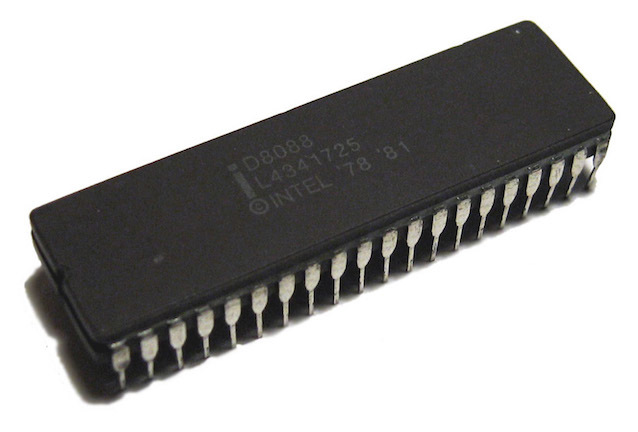
To increase 8086 sales, Intel released the 8088 processor, which largely matched its predecessor. The bus width only decreased from 16 bits to 8 bits. This change allowed the processor to work with 8-bit support chips. The architecture has also changed slightly. The Intel 8088 microprocessor used a 4-byte prefetch queue rather than 6-byte.
The processor was used in the first model of the IBM PC 5150 line (1981). Many large companies, such as AMD, Siemens, NEC and others, cloned 8088.
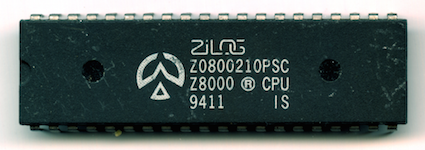
In 1979, Zilog launched its 16-bit Z8000 microprocessor. It was produced using the 6-micron-3-micron process technology with 17,500 transistors. The clock frequency ranged from 4 MHz to 10 MHz for the main version and from 4 MHz to 20 MHz for CMOS. The memory capacity reached 8 MB for the Z8001 and 64 KB for the Z8002. The width of the data bus was 16 bits, and the address bus was 23 bits (in the Z8002 version - 16 bits).
Initially, two processor versions were released: Z8001 and Z8002. Their differences consisted only in the fact that the first worked with addressing up to 8 MB of memory, and the second only up to 64 KB. A little later, the Z8003 and Z8004 models appeared, which were able to work with virtual memory.
The Z8000 processors were used in Unix desktop computers, allowing you to create real multi-user systems.

The Motorola 68000 series of CISC microprocessors (68k) was introduced in 1979. The crystal had a 32-bit core, but it worked through 16-bit data buses and a 24-bit address bus. Its frequency was 8 MHz - 20 MHz, and the number of transistors totaled 68,000 pieces. The CPU was manufactured in a DIP form factor with 64 pins. But there were also models with LCC and PGA connectors.
The processor has gained popularity among many companies and has been used in various PCs. But of course, the most famous are Apple computers: Lisa and Macintosh.
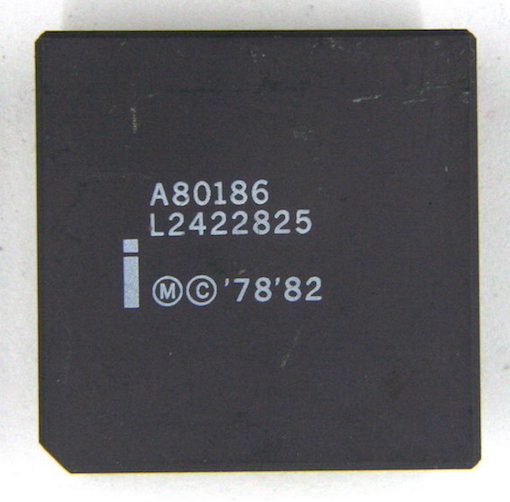
The next Intel processor was 80186, which was based on the 8086 architecture. It was produced using a 3-micron process technology and contained 134,000 transistors. The memory capacity was 1 MB, the capacity of the data bus was 16-bit, and the address bus was 20-bit. The clock frequency reached 6 MHz - 25 MHz.
New commands were added to 80186:
- two direct memory access controllers with interrupt circuits (DMA);
- address decoders;
- three-channel programmable timer counter;
- synchronization generator;
- programmable interrupt controller.
The processors were used little in computers, only in some PC models, such as Compis (Sweden), RM Nimbus (Great Britain), Unisys ICON (Canada), HP 200lx (USA), and Tandy 2000 (USA).

The next model of the company was released in February 1982. It was a 16-bit x86-compatible microprocessor of the second generation 80286. There was support for real mode. In protected mode, the capacity of the address space could be up to 1 GB by changing the mechanism of addressing memory.
The processor surpassed the previous model in technical specifications. It was produced using a 1.5-micron process technology with 134,000 transistors. The RAM was 16 MB, and in protected mode it was possible to use up to 1 GB of virtual memory. The width of the registers and the data bus was 16-bit. Depending on the model, the clock frequency could be 6 MHz, 8 MHz, 10 MHz or 12.5 MHz (at 12.5 MHz, the processor performed at least 2.66 million operations per second).
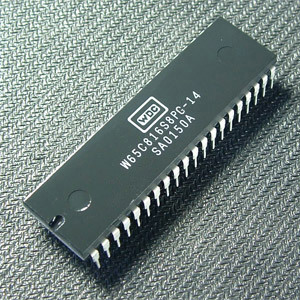
In 1984, the Western Design Center (WDC) launched the W65C816S 16-bit microprocessor. The model had 24-bit memory addressing and supported up to 16 MB of random access memory, as well as an extended set of instructions.
The processor was used in the Apple IIGS computer, as well as Acorn Communicator and C-One systems.
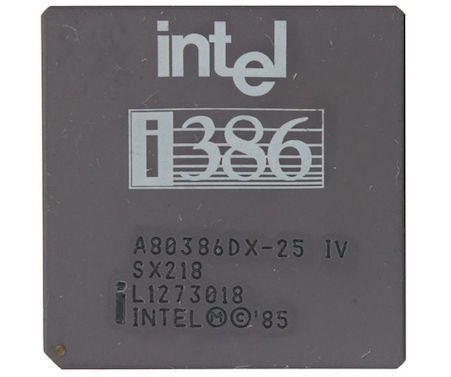
In 1985, a 32-bit processor with x86 architecture of the third generation Intel 80386 (or i386) was released. The processor retained backward compatibility with 8086 and 80286. It was produced using a 1.5-micron-1.0-micron process technology. Through page conversion, the processor could address up to 4 GB of physical memory and up to 64 GB of virtual memory. The clock frequency was 12 MHz - 40 MHz.
The Intel i386 processor was presented in various modifications, differing among themselves in performance, power consumption, connectors, cases and other characteristics. Models: 386DX (DX - Double-word eXternal), 386SX, 386SL and 386EX (modification of the 386SX processor).
The first computer to use the processor was Compaq Deskpro 386. Also, the model was the first 32-bit processor for desktop and laptop IBM PCs.
The i386 had quite a few clones that were manufactured by AMD, Cyrix, and IBM. AMD's top model was Am386DX, which was not inferior in performance, cheaper, and had a clock frequency of 40 MHz. Clones of Cyrix 86SLC and 486DLC were also well received by users. IBM's most famous clones were the 386SLC and 386DLC processors, which were used on IBM PS / 2 and PS / ValuePoint desktop computers.
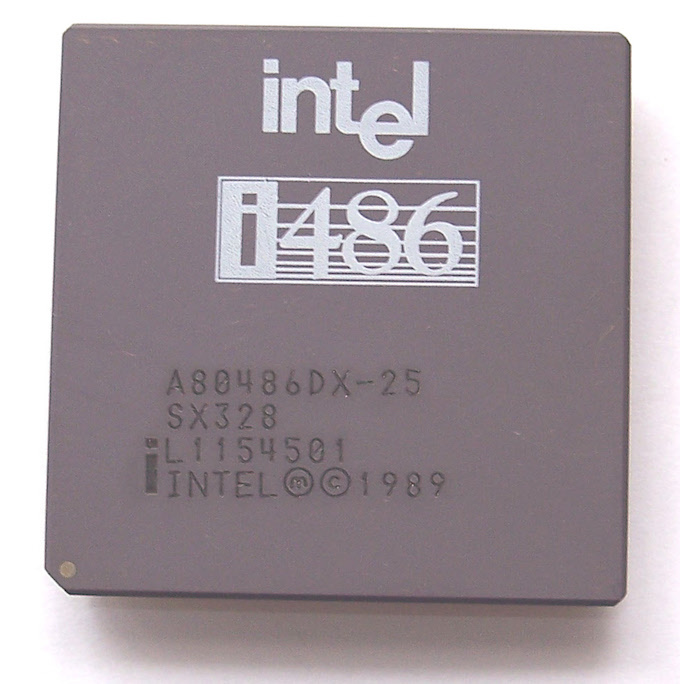
The company's next 32-bit processors, i486 (1989), were more productive due to modernization. The CPU contained almost 1.2 million transistors (about half was reserved for cache memory). Chips were produced using 1-micron process technology, later by 0.8-micron and 0.6-micron manufacturing processes. The amount of memory was 4 GB. The clock frequency was 25 MHz - 50 MHz.
The processor was supplemented by:
- cache memory (8 Kb);
- a computing pipeline, which was engaged in dividing the processing of computer instructions into a sequence of independent stages with saving the results at the end of each of them. The conveyor included the selection, decoding, decoding of the addresses of the operands, the execution of the command and recording the result of the execution of the instruction;
- built-in coprocessor (module operations with floating point) that helps to perform mathematical operations on real numbers;
- multiplication factor (multiplier).
Different companies also copied Intel i486, as well as previous models. Clone production was carried out by AMD, Cyrix, IBM, Texas Instruments and others.
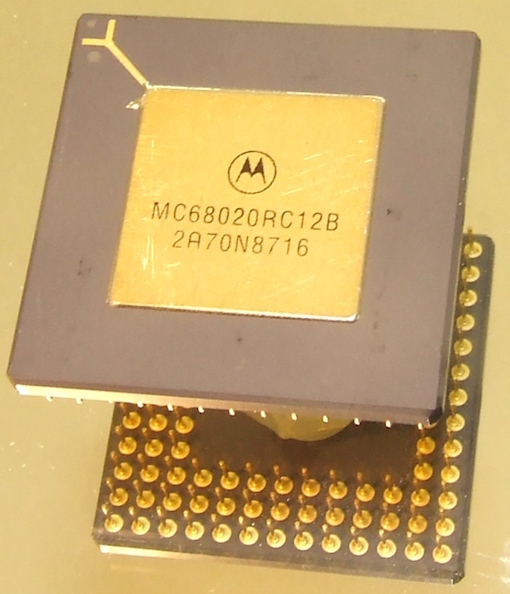
From 1984 to 1990, Motorola launched its 32-bit processor lineup: 68020, 68030, 68040. The Pioneer i386 (68020) was manufactured using a 2-micron process technology and totaled 190,000 transistors. Its clock frequency was 12 MHz - 33 MHz. 68020 became the first processor in the Motorola 68k line with built-in first level cache memory (256 bytes).
The processor was used in Apple computers: Macintosh II and Macintosh LC.
68030 appeared on sale in 1987. The processor had a dynamic data bus, which operated in 8-bit, 16-bit, and 32-bit modes. An additional 256 bytes of cache in the first level appeared. The clock frequency ranged from 16 MHz to 50 MHz.
Motorola 68030 has also been used on Apple Macintosh II and Commodore Amiga computers, on Next Cube, Sun 3/80, Atari TT, and Atari Falcon systems.
In 1990, the 68040 processor entered the market. An integrated coprocessor appeared in it. The instruction cache and data cache have increased to 4 KB. The principle of the processor was based on computing pipelines, which consisted of six stages. The clock frequency reached 40 MHz.
The 68040 processor became the backbone of the Macintosh Quadra High-End System. Macintosh Centris and Performa also used the 68040 family of processors.
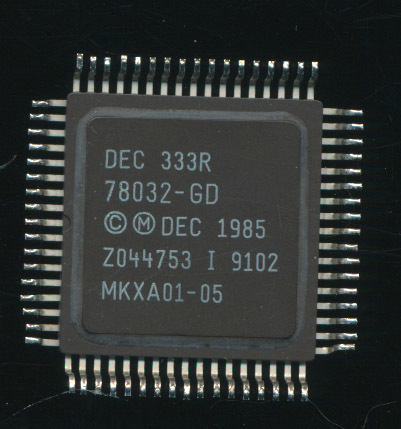
Between the 80s and 90s, DEC released a whole series of 32-bit processors based on its own VAX architecture (32-bit computer architecture was developed by Digital Equipment Corporation as part of the Star project).
The first in the series was MicroVAX 78032. It was manufactured using the 3-micron process technology and containing 125,000 transistors, operating at a frequency of 5 MHz.
In 1987, the CVAX chipset was introduced, the clock frequency of which was 11.11 MHz or 12.5 MHz. The processor was produced using the first generation CMOS technology, the total cache of instructions and data was 1 KB and 64 KB of external cache was supported.
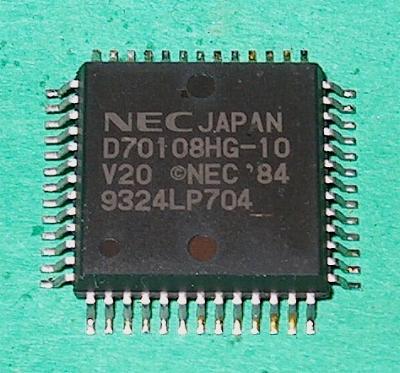
Special mention deserves the processors of the domestic market of Japan.
The first 32-bit V60 processor was released by NEC in 1986. This CPU was manufactured using a 1.5-micron process technology and totaled 375,000 transistors. He used six-stage computing pipelines, and also had a built-in coprocessor and memory management unit. The clock frequency reached 16 MHz.
In 1987, the V70 came out, which eventually began to be produced using the 1.2-micron process technology. The clock frequency was 20 MHz. At this speed, the chip performance reached 6.6 million instructions per second.
And in 1989, the company released the V80 processor. This model already had instruction cache and data cache (1 KB each). A crystal was produced using the 0.8-micron process technology and contained 980,000 transistors. V80 worked at a frequency of 25/33 MHz.
Intel 4004

The first single-chip microprocessor is considered a 4-bit Intel 4004, released November 15, 1971. Intel was just starting its formation and its creators, Robert Noyce, Gordon Moore and Andrew Grove, spent a lot of energy on the development process. Thanks to the contribution of the Italian physicist Federico Fagina, the company's engineers managed to place the key components on one chip and create a microprocessor 4004.
Intel 4004 was produced using a 10-micron process technology, counted 2,250 transistors and worked at a frequency of 108 kHz (performed 92,600 operations per second). The clock frequency was 740 kHz. The memory capacity reached 4 Kb, the bus capacity was 4 bits. The crystal area was 12 mm 2 .
Intel 8008

In the early 70's, the company released the first 8-bit central processor Intel 8008. It was developed simultaneously with 4004 on order for Computer Terminal Corporation (later Datapoint). But the company refused the CPU (as well as cooperation with Intel) due to the fact that the process of creating the microcircuit went beyond the established deadlines, and its characteristics did not meet expectations.
According to the technical characteristics, the microprocessor 8008 largely corresponded to the previous version. It was produced using the same 10-micron process technology and contained 3,500 transistors. The internal stack supported 8 levels, and the memory capacity was 16 Kb. The clock frequency was lower than that of 4004, it was 500 kHz. In terms of speed, the 8-bit Intel processor lagged behind the 4-bit one. The bus width was 8-bit. The processor could access 8 input ports and 24 output ports.

One of the first microprocessor-based computer systems was the Sac State 8008 project (1972). It was a full-fledged microcomputer with a disk OS, a color display, 8 KB of RAM and a 3 + 2 MB disk, keyboard, modem, and printer. It was intended for the processing and storage of medical records.
Intel 8080

In the spring of 1974, Intel released an improved version - the 8-bit Intel 8080 microprocessor. It was produced using the new 6-micron process technology using NMOS technology, which allows 4758 transistors to be placed on the chip. The clock frequency was 2 MHz (with a time of 2.5 MHz, 3.1 MHz and 4 MHz), the memory capacity was 64 Kb. The width of the data bus was 8-bit, and the address bus was 16-bit. The 8080 had a highly developed command system: 16 data transfer commands, 31 commands for their processing, 28 commands for transition (with direct addressing), 5 control commands.

Due to the high performance of the processor, it was a success. Based on the Intel 8080, MITS has released the Altair-8800 microcomputer. Despite the modest characteristics (256 bytes of RAM, the lack of a monitor and keyboard), he gained unprecedented popularity and sold out very quickly.
There were quite a few Intel 8080 clones from other companies, such as National Semiconductor, NEC, Siemens, and AMD. There was also a Soviet counterpart from the Kiev Scientific Research Institute of Microdevices - the KR580VM80A microprocessor (1977).
Motorola 6800

In 1974, Motorola released its processor - 6800. The crystal was produced using a 6-micron process technology, with a clock frequency of 2 MHz and a memory of 64 Kb. N-MOS technology was used. The processor had a 16-bit address bus and a command system of 78 operations. An index register was present.
Motorola 6800 was very popular, it was used in many PCs. Motorola 6801 and 6803 microcontrollers were created on the basis of its architecture.
MOS Technology 6502

In 1975, MOS Technology introduced the 8-bit microprocessor 6502. In fact, this processor was an updated version of 6501, which failed due to pin compatibility with the Motorola 6800. The CPU was inferior to the competitors 8080 and 6800 in terms of performance. It had a 16-bit address bus, 64 Kb of RAM. The clock frequency was only 1 MHz. The processor had a CISC architecture.
The advantage of this model was the price - only $ 25 (many times cheaper than Intel and Motorola). This has contributed to the rapid growth in processor sales.
6502 was used in PCs such as Apple I, Apple II, Commodore PET, etc. Also, processors of this series have found application in video games, starting with the Atari 2600, using the 6507 model with fewer pins and the ability to address only 8 KB of memory.
MOS Technology granted licenses by Rockwell, Synertek for the production of processors and the use of 6502. There was a Soviet analogue of 4K602BM1.
Zilog z80
In the second half of the 70s, one of the creators of the microprocessor, Italian Federico Fagin, left Intel. Together with engineer Ralph Wingermann and Japanese engineer Masatoshi Shima, they founded the company Zilog. And already in the early summer of 1976, the Zilog Z80 processor entered the market, which in its architecture resembled the improved 8080. The microprocessor had an expanded set of instructions, new registers, interrupt modes, two separate register blocks.
The Z80 was manufactured using the 3-micron process technology using CMOS technology and contained 8500 transistors. The clock frequency ranged from 2.5 MHz to 8 MHz for the main version and 1 MHz to 20 MHz for the CMOS version. The memory reached 64 KB, with a 16-bit address bus. The size of the crystal was 4.6 mm x 4.9 mm, with an area of 22.54 mm 2. In addition to technical advantages, the Z80 was also cheaper than the Intel processor.
The CPU came in different versions: Z80 (2.5 MHz), Z80A (4 MHz), Z80B (6 MHz) and Z80H (8 MHz). It was used in computers Sharp, NEC and others.
Intel 8086 and 8088

In 1978, Intel released the first 8086 16-bit microprocessor. It has been under development for more than two years. The processor was manufactured using a 3-micron process technology and contained 29,000 transistors. The memory capacity reached 1 MB. The clock frequency was 4 MHz - 10 MHz, the width of the registers and the data bus was 16 bits, and the width of the address bus was 20 bits. Intel 8086 differed in speed.
The 8086 processor had fourteen 16-bit registers: 4 general-purpose (AX, BX, CX, DX), 2 index registers (SI, DI), 2 index (BP, SP), 4 segment registers (CS, SS, DS, ES), program counter or instruction pointer (IP) and flag register (FLAGS, includes 9 flags).

To increase 8086 sales, Intel released the 8088 processor, which largely matched its predecessor. The bus width only decreased from 16 bits to 8 bits. This change allowed the processor to work with 8-bit support chips. The architecture has also changed slightly. The Intel 8088 microprocessor used a 4-byte prefetch queue rather than 6-byte.
The processor was used in the first model of the IBM PC 5150 line (1981). Many large companies, such as AMD, Siemens, NEC and others, cloned 8088.
Zilog Z8000

In 1979, Zilog launched its 16-bit Z8000 microprocessor. It was produced using the 6-micron-3-micron process technology with 17,500 transistors. The clock frequency ranged from 4 MHz to 10 MHz for the main version and from 4 MHz to 20 MHz for CMOS. The memory capacity reached 8 MB for the Z8001 and 64 KB for the Z8002. The width of the data bus was 16 bits, and the address bus was 23 bits (in the Z8002 version - 16 bits).
Initially, two processor versions were released: Z8001 and Z8002. Their differences consisted only in the fact that the first worked with addressing up to 8 MB of memory, and the second only up to 64 KB. A little later, the Z8003 and Z8004 models appeared, which were able to work with virtual memory.
The Z8000 processors were used in Unix desktop computers, allowing you to create real multi-user systems.
Motorola 68000

The Motorola 68000 series of CISC microprocessors (68k) was introduced in 1979. The crystal had a 32-bit core, but it worked through 16-bit data buses and a 24-bit address bus. Its frequency was 8 MHz - 20 MHz, and the number of transistors totaled 68,000 pieces. The CPU was manufactured in a DIP form factor with 64 pins. But there were also models with LCC and PGA connectors.
The processor has gained popularity among many companies and has been used in various PCs. But of course, the most famous are Apple computers: Lisa and Macintosh.
Intel 80186
The next Intel processor was 80186, which was based on the 8086 architecture. It was produced using a 3-micron process technology and contained 134,000 transistors. The memory capacity was 1 MB, the capacity of the data bus was 16-bit, and the address bus was 20-bit. The clock frequency reached 6 MHz - 25 MHz.
New commands were added to 80186:
- two direct memory access controllers with interrupt circuits (DMA);
- address decoders;
- three-channel programmable timer counter;
- synchronization generator;
- programmable interrupt controller.
The processors were used little in computers, only in some PC models, such as Compis (Sweden), RM Nimbus (Great Britain), Unisys ICON (Canada), HP 200lx (USA), and Tandy 2000 (USA).
Intel 80286

The next model of the company was released in February 1982. It was a 16-bit x86-compatible microprocessor of the second generation 80286. There was support for real mode. In protected mode, the capacity of the address space could be up to 1 GB by changing the mechanism of addressing memory.
The processor surpassed the previous model in technical specifications. It was produced using a 1.5-micron process technology with 134,000 transistors. The RAM was 16 MB, and in protected mode it was possible to use up to 1 GB of virtual memory. The width of the registers and the data bus was 16-bit. Depending on the model, the clock frequency could be 6 MHz, 8 MHz, 10 MHz or 12.5 MHz (at 12.5 MHz, the processor performed at least 2.66 million operations per second).
WDC W65C816S

In 1984, the Western Design Center (WDC) launched the W65C816S 16-bit microprocessor. The model had 24-bit memory addressing and supported up to 16 MB of random access memory, as well as an extended set of instructions.
The processor was used in the Apple IIGS computer, as well as Acorn Communicator and C-One systems.
Intel i386

In 1985, a 32-bit processor with x86 architecture of the third generation Intel 80386 (or i386) was released. The processor retained backward compatibility with 8086 and 80286. It was produced using a 1.5-micron-1.0-micron process technology. Through page conversion, the processor could address up to 4 GB of physical memory and up to 64 GB of virtual memory. The clock frequency was 12 MHz - 40 MHz.
The Intel i386 processor was presented in various modifications, differing among themselves in performance, power consumption, connectors, cases and other characteristics. Models: 386DX (DX - Double-word eXternal), 386SX, 386SL and 386EX (modification of the 386SX processor).
The first computer to use the processor was Compaq Deskpro 386. Also, the model was the first 32-bit processor for desktop and laptop IBM PCs.
The i386 had quite a few clones that were manufactured by AMD, Cyrix, and IBM. AMD's top model was Am386DX, which was not inferior in performance, cheaper, and had a clock frequency of 40 MHz. Clones of Cyrix 86SLC and 486DLC were also well received by users. IBM's most famous clones were the 386SLC and 386DLC processors, which were used on IBM PS / 2 and PS / ValuePoint desktop computers.
Intel i486

The company's next 32-bit processors, i486 (1989), were more productive due to modernization. The CPU contained almost 1.2 million transistors (about half was reserved for cache memory). Chips were produced using 1-micron process technology, later by 0.8-micron and 0.6-micron manufacturing processes. The amount of memory was 4 GB. The clock frequency was 25 MHz - 50 MHz.
The processor was supplemented by:
- cache memory (8 Kb);
- a computing pipeline, which was engaged in dividing the processing of computer instructions into a sequence of independent stages with saving the results at the end of each of them. The conveyor included the selection, decoding, decoding of the addresses of the operands, the execution of the command and recording the result of the execution of the instruction;
- built-in coprocessor (module operations with floating point) that helps to perform mathematical operations on real numbers;
- multiplication factor (multiplier).
Different companies also copied Intel i486, as well as previous models. Clone production was carried out by AMD, Cyrix, IBM, Texas Instruments and others.
Motorola 68020, 68030, 68040
From 1984 to 1990, Motorola launched its 32-bit processor lineup: 68020, 68030, 68040. The Pioneer i386 (68020) was manufactured using a 2-micron process technology and totaled 190,000 transistors. Its clock frequency was 12 MHz - 33 MHz. 68020 became the first processor in the Motorola 68k line with built-in first level cache memory (256 bytes).
The processor was used in Apple computers: Macintosh II and Macintosh LC.
68030 appeared on sale in 1987. The processor had a dynamic data bus, which operated in 8-bit, 16-bit, and 32-bit modes. An additional 256 bytes of cache in the first level appeared. The clock frequency ranged from 16 MHz to 50 MHz.
Motorola 68030 has also been used on Apple Macintosh II and Commodore Amiga computers, on Next Cube, Sun 3/80, Atari TT, and Atari Falcon systems.
In 1990, the 68040 processor entered the market. An integrated coprocessor appeared in it. The instruction cache and data cache have increased to 4 KB. The principle of the processor was based on computing pipelines, which consisted of six stages. The clock frequency reached 40 MHz.
The 68040 processor became the backbone of the Macintosh Quadra High-End System. Macintosh Centris and Performa also used the 68040 family of processors.
Dec vax

Between the 80s and 90s, DEC released a whole series of 32-bit processors based on its own VAX architecture (32-bit computer architecture was developed by Digital Equipment Corporation as part of the Star project).
The first in the series was MicroVAX 78032. It was manufactured using the 3-micron process technology and containing 125,000 transistors, operating at a frequency of 5 MHz.
In 1987, the CVAX chipset was introduced, the clock frequency of which was 11.11 MHz or 12.5 MHz. The processor was produced using the first generation CMOS technology, the total cache of instructions and data was 1 KB and 64 KB of external cache was supported.
NEC V60, V70, V80

Special mention deserves the processors of the domestic market of Japan.
The first 32-bit V60 processor was released by NEC in 1986. This CPU was manufactured using a 1.5-micron process technology and totaled 375,000 transistors. He used six-stage computing pipelines, and also had a built-in coprocessor and memory management unit. The clock frequency reached 16 MHz.
In 1987, the V70 came out, which eventually began to be produced using the 1.2-micron process technology. The clock frequency was 20 MHz. At this speed, the chip performance reached 6.6 million instructions per second.
And in 1989, the company released the V80 processor. This model already had instruction cache and data cache (1 KB each). A crystal was produced using the 0.8-micron process technology and contained 980,000 transistors. V80 worked at a frequency of 25/33 MHz.
